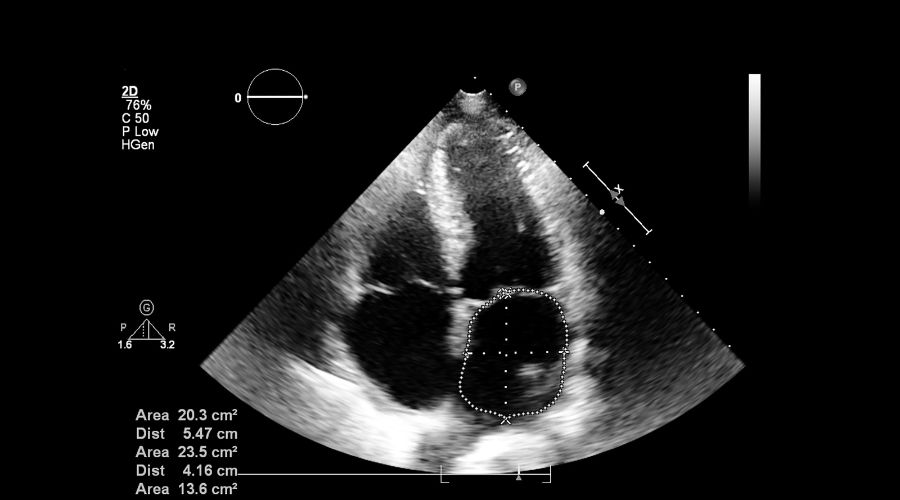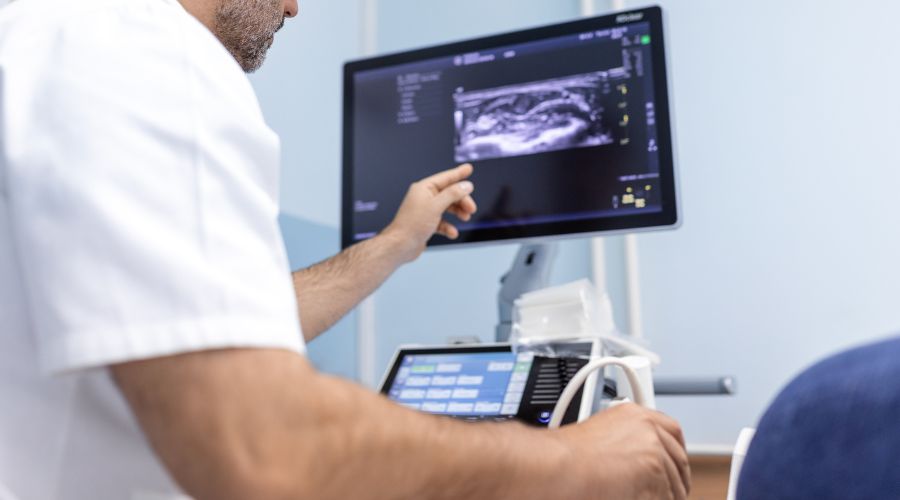With or Without Contrast
If the sonographer cannot get a clear picture of your heart, we may use contrast liquid to get a better picture. Your cardiologist will discuss the pros and cons of using contrast to get a better image of your heart.
Doppler Echo
A Doppler echocardiogram is the latest technology in echocardiography that allows your cardiologist to understand how blood moves through your heart in real time. Doppler echos give yet another layer of information to your cardiologist in understanding your heart’s function.
Transesophageal Echocardiogram (TEE)
If a traditional echocardiogram is not able to create a clear picture of the heart for your cardiologist, we may employ a transesophageal echocardiogram. The TEE uses similar technology but generates the image from inside the body. A minimally invasive procedure known as endoscopy is used to thread a probe down the esophagus. When pointed at the heart, the transducer has less interference from body tissue and bony structures like the ribs. During the procedure, you will be sedated and the back of the throat will be numbed.


